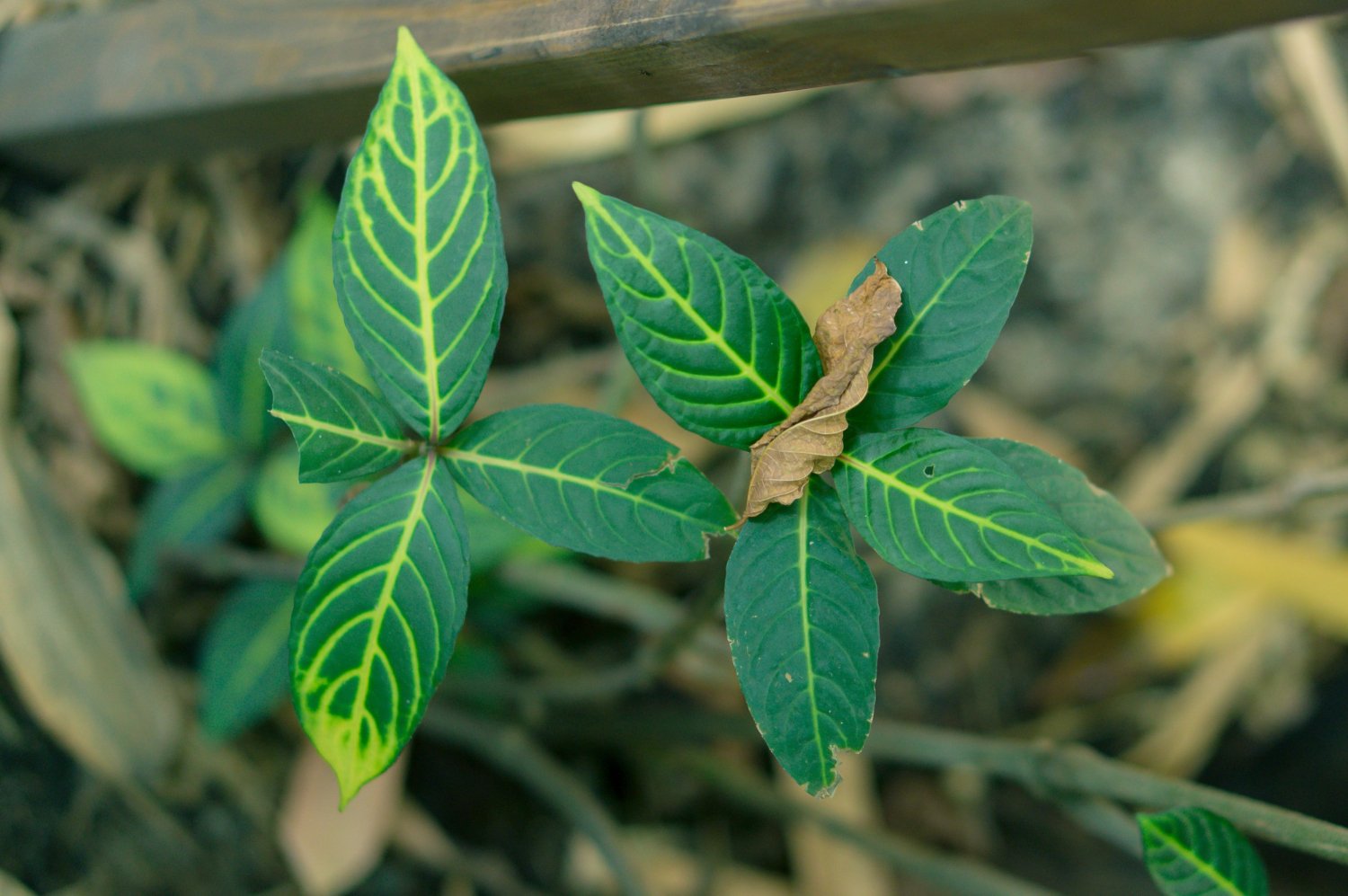Decoding Nutrient Deficiency in Plants through Leaves
How to read the hidden signals in foliage and restore soil health without harming the environment

Walking through your field one fine morning you notice pale, yellowing leaves, curled edges, or strange discolorations. These aren’t merely cosmetic flaws, they are the silent SOS calls from plants struggling beneath the surface. Learn how to listen, diagnose, and heal your soil the sustainable way.
Plants are remarkable communicators. Through subtle changes in leaf color, shape, texture, and patterning, they continuously signal their internal status and when stressed, they reveal what they are missing. In sustainable farming, recognising and responding to these signals is not just helpful, it’s essential. Overreliance on synthetic inputs distracts us from the root causes of imbalance; by contrast, diagnostic insight paired with ecological soil care can restore fertility, reduce costs, and protect local ecosystems.
This article guides you through the key nutrient deficiency symptoms, practical diagnosis, and sustainable correction strategies so your crops can flourish, naturally.
Recognising Deficiency Symptoms
Plants require a range of essential nutrients, broadly divided into macronutrients (needed in larger amounts: nitrogen, phosphorus, potassium, calcium, magnesium, sulfur) and micronutrients (trace elements: iron, zinc, manganese, boron, copper, molybdenum). Deficiency symptoms often follow patterns depending on whether the nutrient is mobile (can be moved within the plant from older tissue) or immobile (stays where first deposited).
Here are common deficiency signs to watch for, and what they often mean:
Nitrogen (N)
-
Older leaves turn pale yellow, often progressing from tip toward the base.
-
Overall stunted growth, weak stems, reduced leaf size.
-
Because nitrogen is mobile within the plant, symptoms appear on older foliage.
Phosphorus (P)
-
Leaves may turn dark green, sometimes with reddish or purplish hues (especially in cooler soil).
-
Growth slows, stems are weak, roots are underdeveloped.
-
Deficiency often shows early in young plants and disappears later if conditions improve.
Potassium (K)
-
Yellowing or spotting along leaf margins and tips, necrosis (dead tissue) along edges.
-
Weakened stems, poor fruit quality, curling or folding at tips.
-
Older leaves are usually affected first due to mobility.
Calcium (Ca)
-
New growth (leaf tips, shoot apex, root tips) may die back or distort.
-
“Tip burn,” blossom-end rot (in fruits), leaf edges curling.
-
Because calcium is immobile in the plant, young leaves show first signs.
Magnesium (Mg)
-
Interveinal chlorosis: yellowing between veins while veins remain green, starting on older leaves.
-
Dead spots may appear; leaf edges may distort.
-
Mobile in the plant, so older tissue shows deficiency first.
Sulfur (S)
-
Uniform yellowing of younger leaves (rather than old), often mistaken for nitrogen deficiency.
-
Slower growth, pale stems.
-
Less mobile than N, so symptoms appear on newer growth.
Iron (Fe)
-
Interveinal chlorosis (pale between veins) on new leaves, often with veins remaining darker.
-
If severe, leaves turn white; stunted growth.
-
Iron is relatively immobile, so new leaves first show the stress.
Zinc (Zn)
-
New leaves show pale margins or interveinal chlorosis, sometimes small leaf size; leaves may “bronze.”
-
Stunted or distorted shoot growth.
Manganese (Mn)
-
Interveinal chlorosis on new leaves, brown or grey spots, sometimes puckering.
-
Immobile, so younger leaves are symptomatic.
Boron (B)
-
Deformed new shoots, hollow or brittle stems, brown spots on leaves, failure of bud growth.
-
High sensitivity: narrow window between deficiency and toxicity.
Copper (Cu)
-
Yellowing of young leaves, sometimes streaking; dieback of tips.
-
Often affects shoots; immobile in planta.
Molybdenum (Mo)
-
Pale entire leaves, sometimes cupping or mottling; “whiptail” in Brassicas.
-
Rare but possible in acid soils.
Plants may sometimes show multiple deficiencies simultaneously or exhibit pseudo-deficiency patterns due to pests, disease, water stress, or soil compaction so one must interpret symptoms in context.
From Observation to Confirmation
1. Observe carefully
Walk your fields or garden regularly. Note which leaves show symptoms (older or younger), the pattern (edges, veins, spots), and whether symptoms are uniform or patchy.
2. Compare with reference images
Use visual guides or curated image collections of deficiency symptoms in crops (such as crop nutrient deficiency photo libraries) to match your observations.
3. Hypothesize a deficiency
Based on mobility (older vs new leaf symptoms) and pattern (interveinal, margin, spotting), form a working diagnosis (e.g., “interveinal chlorosis on new leaves ≈ iron deficiency”).
4. Confirm with tests
-
Soil testing: gives nutrient levels, pH, organic matter, CEC, and availability.
-
Plant tissue (leaf) analysis: shows actual nutrient concentration in plant tissues.
-
In-field remedies (spot test): apply a small dose of suspected nutrient and observe over 1–2 weeks whether symptoms improve.
Only after confirming should you act. Blind application of fertilizer can backfire: it may trigger nutrient imbalances, cause pollution or degrade soil life.
Feeding Soil, Not Just Plants
When deficiency is confirmed, follow these sustainable practices to correct it and rebuild soil health over the long term:
Use organic amendments
-
Compost, well-decomposed manure, rock dust, biochar, compost teas—they help supply nutrients gradually, feed microbes, and improve structure.
-
For green manure or cover crops (legumes, deep-rooting species), incorporate them to fix nitrogen or bring up micronutrients.
Apply targeted, small-dose mineral supplements
-
Use rock phosphate, dolomitic lime, gypsum, kelp meal, or trace mineral blends (zinc sulfate, chelated iron) only as needed.
-
Avoid blanket high-dose synthetic fertilizers, especially near waterways or fragile ecosystems.
Manage soil pH
Many micronutrients become unavailable in extreme pH ranges (too acidic or too alkaline). Use lime, wood ash, sulfur, or organic acid inputs to adjust pH into a balanced window (often ~6.0–7.0 for many crops).
Promote biological activity
Healthy microbial communities (mycorrhizal fungi, nitrogen-fixing bacteria, decomposers) mobilize nutrients, sequester excesses, buffer fluctuations, and reduce reliance on fertilizers.
Use foliar sprays judiciously
Foliar application of micronutrient chelates (iron, zinc, boron) can offer quick relief in acute deficiency. But it should only supplement, not replace, soil-based replenishment.
Rotate crops and use intercropping
Different crops draw different nutrients; rotation helps restore balance. Deep-rooted species can mine subsoil nutrients and deposit them in the upper layers.
Monitor and adapt
After applying a remedy, monitor plant recovery and retest soil/tissue in subsequent seasons. Adjust your plan over time.
Tips for the Field
-
Start small: Try correcting a few symptomatic plants before scaling treatments across the whole field.
-
Do split applications: Instead of one heavy dose, apply smaller doses at critical growth stages.
-
Avoid over-correction: Excess of one nutrient can induce a deficiency of another (for example, excess phosphorus might inhibit zinc uptake).
-
Record and revisit: Maintain records of symptoms, diagnoses, treatments, and outcomes to refine your diagnostics over seasons.
-
Combine tech with intuition: Tools like smartphone image analysis, drones or machine-learning models are emerging to flag deficiency early use those as complements, not substitutes.
Why Sustainable Diagnosis Matters
Addressing nutrient deficiency in sustainable farming is not just about restoring yield; it’s about rebuilding resilience. Over time, soil fertility improves, input costs decline, and ecosystems become more stable. Plus, environmentally responsible practices prevent nutrient runoff, waterway pollution, and greenhouse gas emissions from excessive fertilizers. This is the path to farming that nurtures the land and produces abundant, healthy crops.
When leaves whisper distress, a skilled farmer listens. Interpreting plant symptoms, confirming with tests, then healing with ecological methods leads not only to healthier plants today but stronger soils for tomorrow. Grow with balance, observe with curiosity and steward your land for generations.
#SustainableFarming #PlantNutrition #SoilHealth #OrganicAgriculture #RegenerativeAg #LeafDiagnostics #CropCare #EcoFarming #Micronutrients #FarmWisdom



